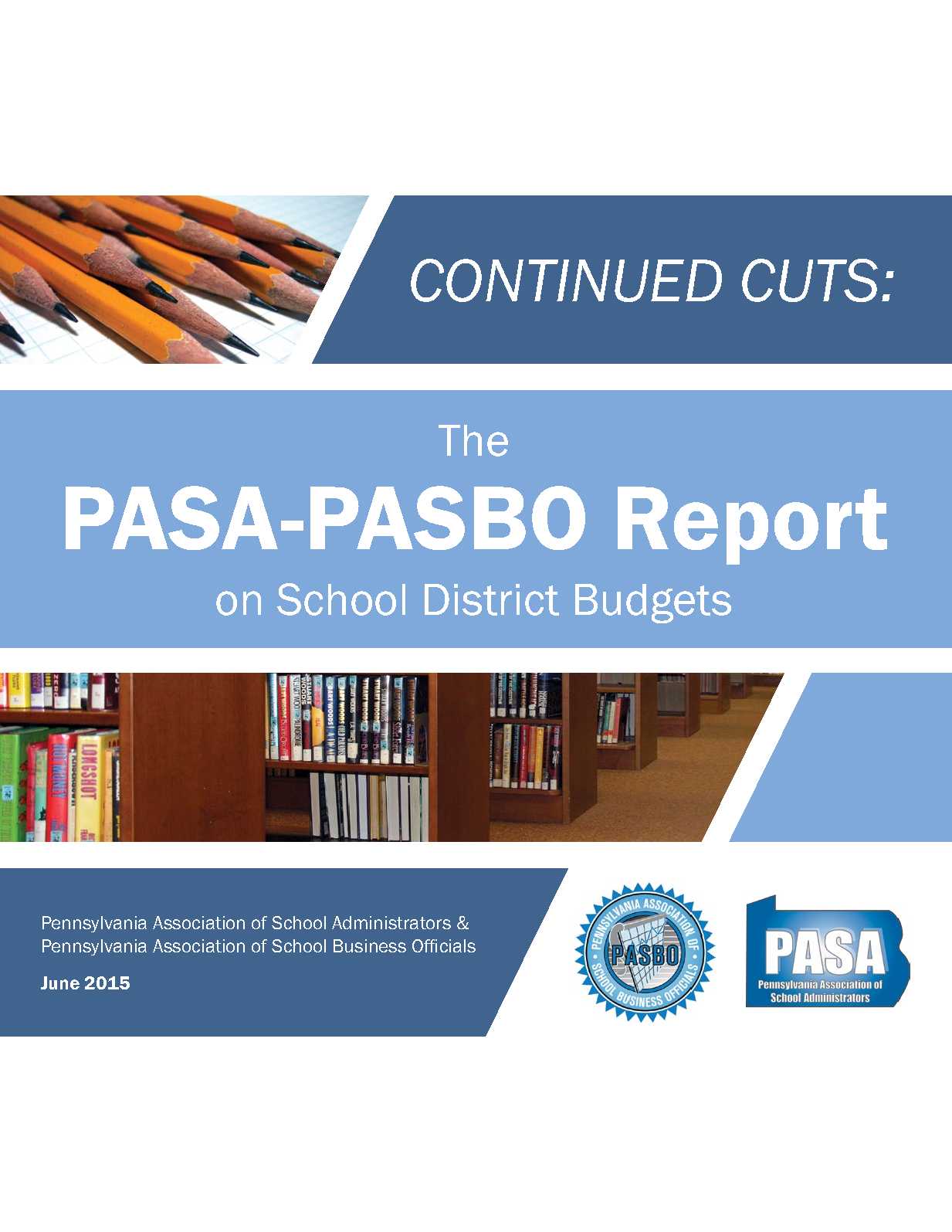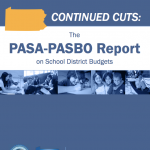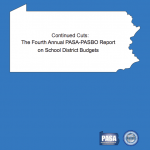Continued Cuts: The PASA-PASBO Report on School District Budgets
Over the past five years, PASA and PASBO have issued a series of reports to document how Pennsylvania school districts have responded to an economic downturn; state and federal education cuts; and other major, externally-driven pressures. These reports have itemized the number of education jobs lost throughout the Commonwealth (at least 20,000), the frequency with which districts reduced or cut valuable programs (75 percent of districts since 2010-11) and the percentage of districts that raised taxes on an annual basis to keep up with soaring pension (100 percent), health care (93 percent), and charter school costs (85 percent). Dozens of tables, charts, and figures have told one unmistakable story: Pennsylvania’s public schools are not the places they used to be. While the appearance of schools from outside may look the same, what is taking place inside is much different. Increasingly, our public schools are unable to offer the programs and opportunities that we know contribute to student success.
This year’s report includes current budget data and program details, conveying further evidence that the state’s education crisis is reaching every corner of the Commonwealth and districts of every type. Our survey sample consisted of 346 of the state’s 500 districts; together these districts educate approximately 74 percent of Pennsylvania’s public K-12 enrollment. Districts were asked to detail budget plans based on adopted preliminary budgets for fiscal year 2015-2016; for a smaller subset of questions, districts were asked to consider the impact of the Governor’s proposed budget for 2015-2016.
This edition of Continued Cuts also brings individual district stories to the forefront: Outstanding public education leaders from seven Pennsylvania school districts share their experiences and perspectives though case studies that highlight specific elements of the education funding crisis.
The common thread in these stories is that local superintendents, business managers, school boards, and taxpayers have worked creatively and collaboratively to serve their students, and are now looking to Harrisburg to deliver desperately-needed resources to balance five years of historic reductions in educational programs. We cannot continue the failed strategy of cutting our way to success. To be clear, this report is not alone in documenting the significant financial challenges of school districts across the state: A report released just last month by Temple University’s Center on Regional Politics suggests that by 2018, “60 percent of the districts in the state will face severe and prolonged program and staff reductions to balance their budgets.
We recognize the enormity of the task confronting state policymakers, and the depth of the state’s structural challenges. But there is a real cost to further delay as the data points and case studies in this year's report show. It is time to act.
Published: June 2015




